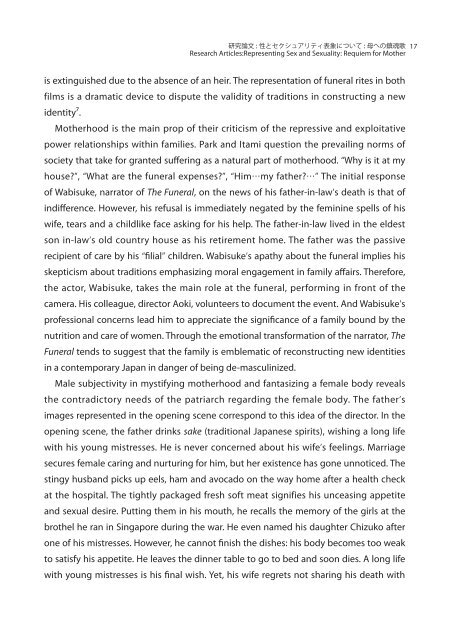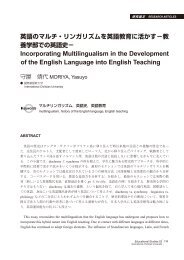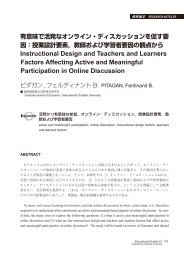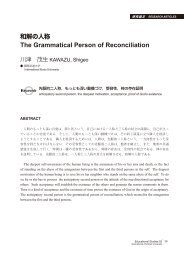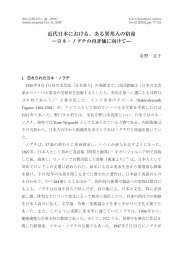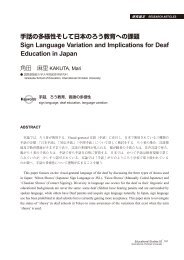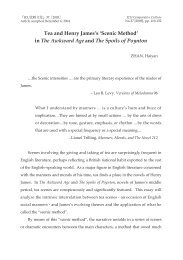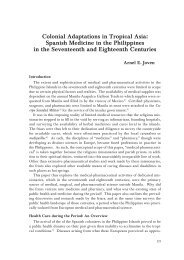Untitled - subsite - å½éåºç£æ大å¦
Untitled - subsite - å½éåºç£æ大å¦
Untitled - subsite - å½éåºç£æ大å¦
Create successful ePaper yourself
Turn your PDF publications into a flip-book with our unique Google optimized e-Paper software.
: : 17<br />
Research Articles:Representing Sex and Sexuality: Requiem for Mother<br />
is extinguished due to the absence of an heir. The representation of funeral rites in both<br />
films is a dramatic device to dispute the validity of traditions in constructing a new<br />
identity⁷.<br />
Motherhood is the main prop of their criticism of the repressive and exploitative<br />
power relationships within families. Park and Itami question the prevailing norms of<br />
society that take for granted suffering as a natural part of motherhood. Why is it at my<br />
house, What are the funeral expenses, Himmy father The initial response<br />
of Wabisuke, narrator of The Funeral, on the news of his father-in-laws death is that of<br />
indifference. However, his refusal is immediately negated by the feminine spells of his<br />
wife, tears and a childlike face asking for his help. The father-in-law lived in the eldest<br />
son in-laws old country house as his retirement home. The father was the passive<br />
recipient of care by his filial children. Wabisukes apathy about the funeral implies his<br />
skepticism about traditions emphasizing moral engagement in family affairs. Therefore,<br />
the actor, Wabisuke, takes the main role at the funeral, performing in front of the<br />
camera. His colleague, director Aoki, volunteers to document the event. And Wabisukes<br />
professional concerns lead him to appreciate the significance of a family bound by the<br />
nutrition and care of women. Through the emotional transformation of the narrator, The<br />
Funeral tends to suggest that the family is emblematic of reconstructing new identities<br />
in a contemporary Japan in danger of being de-masculinized.<br />
Male subjectivity in mystifying motherhood and fantasizing a female body reveals<br />
the contradictory needs of the patriarch regarding the female body. The fathers<br />
images represented in the opening scene correspond to this idea of the director. In the<br />
opening scene, the father drinks sake (traditional Japanese spirits), wishing a long life<br />
with his young mistresses. He is never concerned about his wifes feelings. Marriage<br />
secures female caring and nurturing for him, but her existence has gone unnoticed. The<br />
stingy husband picks up eels, ham and avocado on the way home after a health check<br />
at the hospital. The tightly packaged fresh soft meat signifies his unceasing appetite<br />
and sexual desire. Putting them in his mouth, he recalls the memory of the girls at the<br />
brothel he ran in Singapore during the war. He even named his daughter Chizuko after<br />
one of his mistresses. However, he cannot finish the dishes: his body becomes too weak<br />
to satisfy his appetite. He leaves the dinner table to go to bed and soon dies. A long life<br />
with young mistresses is his final wish. Yet, his wife regrets not sharing his death with


